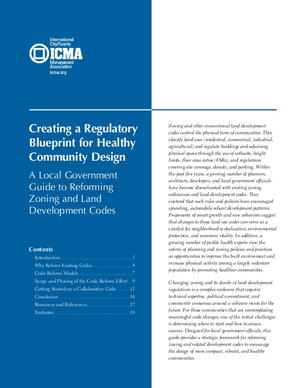
Zoning and other conventional land development codes control the physical form of communities. They classify land uses and regulate buildings and adjoining physical space through the use of setbacks, height limits, floor area ratios (FARs), and regulations covering site coverage, density, and parking. A growing number of planners, architects, developers, and local government officials have become disenchanted with existing zoning ordinances and land development codes. They contend that such rules and policies have encouraged sprawling, automobile-reliant development patterns. Proponents of smart growth and new urbanism suggest that changes to these land use codes can serve as a catalyst for neighborhood revitalization, environmental protection, and economic vitality. In addition, a growing number of public health experts view the reform of planning and zoning policies and practices as opportunities to improve the built environment and increase physical activity among a largely sedentary population by promoting healthier communities. For those communities that are contemplating meaningful code changes, one of the initial challenges is determining where to start and how to ensure success. Designed for local government officials, this guide provides a strategic framework for reforming zoning and related development codes to encourage the design of more compact, vibrant, and healthy communities.
